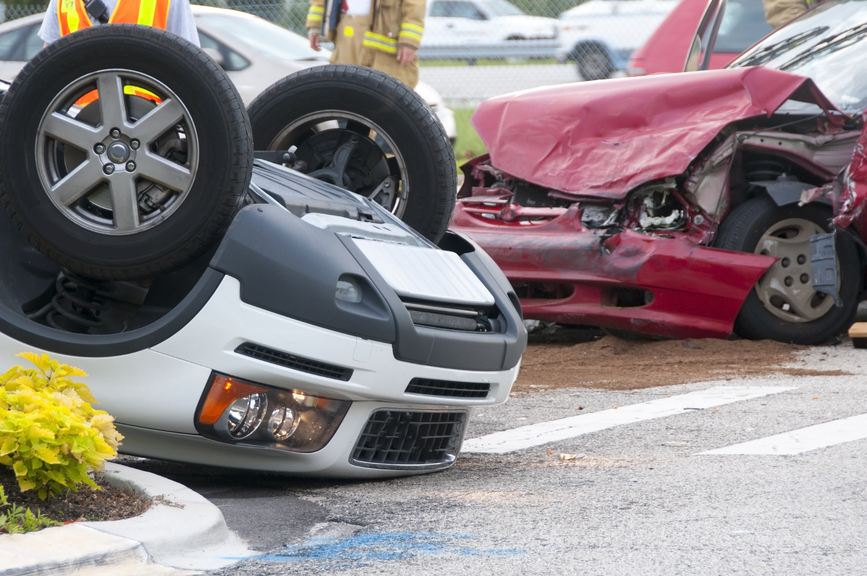
Car accidents can be an inevitable part of driving experience for many motorists. In fact, according to federal data1, the average American driver will be involved in at least four traffic crashes over the course of a lifetime.
While the possibility of being in an auto wreck can be scary to consider, knowing what to do if or when a crash happens can be crucial to remaining calm in the immediate aftermath of an accident – and to taking the appropriate steps to protect yourself, as well as a future claim for compensation.
In order to empower motorists with this knowledge, below is an overview of the most important things to do following a traffic collision, followed by some additional helpful information for those who are ready to proceed with an auto crash claim.
1. Check for serious injuries – Immediately after a car accident, if you are conscious and physically able to move, assess whether you have sustained any potentially catastrophic injuries (such as, for example, a bone fracture that may prevent you from moving). If you are not critically injured, then check the occupants of your vehicle and/or other vehicles that may have been involved in the crash to see if anyone else may be suffering from serious injuries. Taking this step can be helpful in facilitating the delivery of emergency medical care to the accident victims who may need it the most.
2. Call the police – Contacting the police following a crash can be important to ensuring that the wreckage is cleared and that victims get the care they need as soon as possible. Additionally, having police respond to the accident will result in an official police report for the crash being developed.
These police reports can provide very important details about when/where the crash occurred, who the involved parties are and what the outcome of the police investigation into the crash ends up being. While such details can be crucial to determining liability, they can also be essential to gathering important evidence (like witness statements) that can establish liability in the future.
3. Stay at the crash scene until the police release you – Although it may take time for police to arrive at the scene (and, subsequently, for them to investigate the accident), it’s essential that you do NOT leave the scene of the accident until a police officer gives you the official clearance to do so.
If you leave before police arrive at the scene of the accident or before cops give you the OK to go, you could be:
4. Gather some specific information from the involved parties – As you wait for police (either to arrive at the scene or to clear you to leave the scene), do your best to compile some information from the other involved motorists (or parties). This information should include each individual’s full legal name, drivers’ license number and contact information (preferably a current phone number and address).
Additionally, it’s a good idea to record the following information for each driver involved in the accident:
If there were any witnesses to the accident, taking down their names and contact information as well is a smart idea. It should be noted here, however, that some of this information may be recorded in the police report for the accident. So, if you are too badly injured to take this step following a crash, obtaining a copy of the police report can be a viable way to get a hold of this important information when you are ready to move forward with a claim for recovery.
5. Take pictures of the crash-related damage – Modern cellphones are equipped with pretty good cameras these days, making this step a little bit easier for motorists involved in car accidents to complete. By snapping photos of the damage caused by the crash (including the damage to the driver’s own car, deployed airbags, damage to other vehicles, damage to fixed objects like sign posts that may have been hit in the accident, etc.), motorists may be able to capture visual proof of what occurred, as well as the road and/or weather conditions on the day of the crash,. And these photos can potentially serve as crucial evidence in establishing liability at a later point.
When it comes to taking pictures of crash-related damages, it can be incredibly helpful for motorists to:
6. Report the crash to the insurance company – Reporting the accident to insurance companies is an essential step to take after motor vehicle accidents, and the sooner this is generally done, the better. That is because, in many cases, auto insurance policies contain strict deadlines for reporting crashes to insurance companies (and missing these deadlines can complicate a claim).
As you report an auto accident to insurers, make sure that you:
7. Consult an experienced car accident attorney as soon as possible – A car accident lawyer can make sure that your rights are fully protected at every stage of an accident claim. Additionally, an attorney can oversee the complicated administrative work necessary to bring these claims to successful resolutions while you focus on your physical (and possibly mental) recovery.
The information in this article is not, nor is it intended to be, legal advice.
If you happen to be injured in an auto collision in Colorado, you are invited to contact Killian Law to find out more about your options for getting on the path to justice and recovery.
References
1: Compiled & published by the National Highway Traffic Safety Administration (NHTSA) - http://www.nhtsa.gov/NCSA
2: CDOT’s Winter Driving Safety Guide - https://www.codot.gov/travel/winter-driving
3: ABA’s Comprehensive Guide to Personal Injury Cases & their Statutes of Limitations http://www.americanbar.org/content/dam/aba/migrated/publiced/practical/books/family_legal_guide/chapter_13.authcheckdam.pdf
